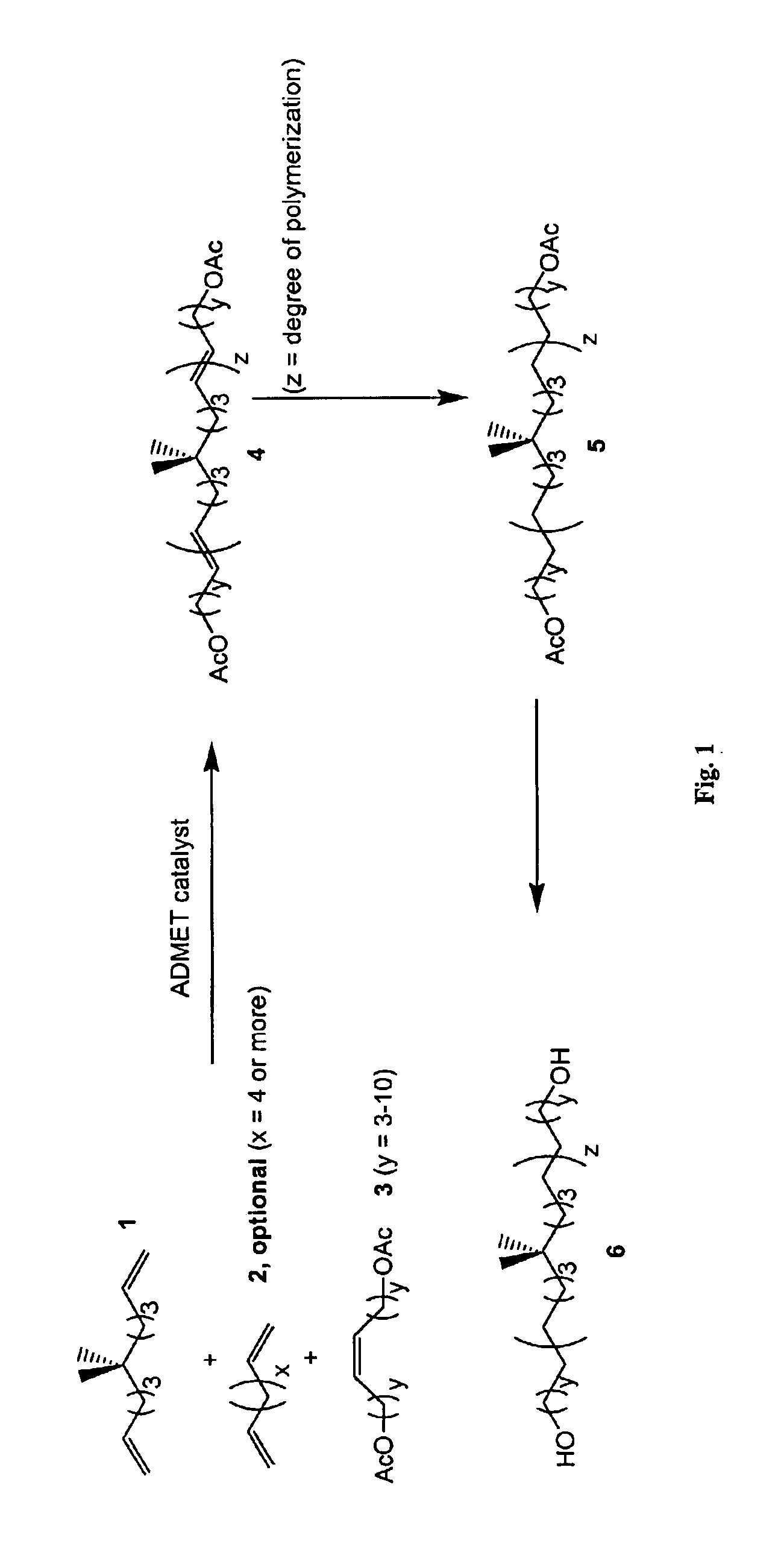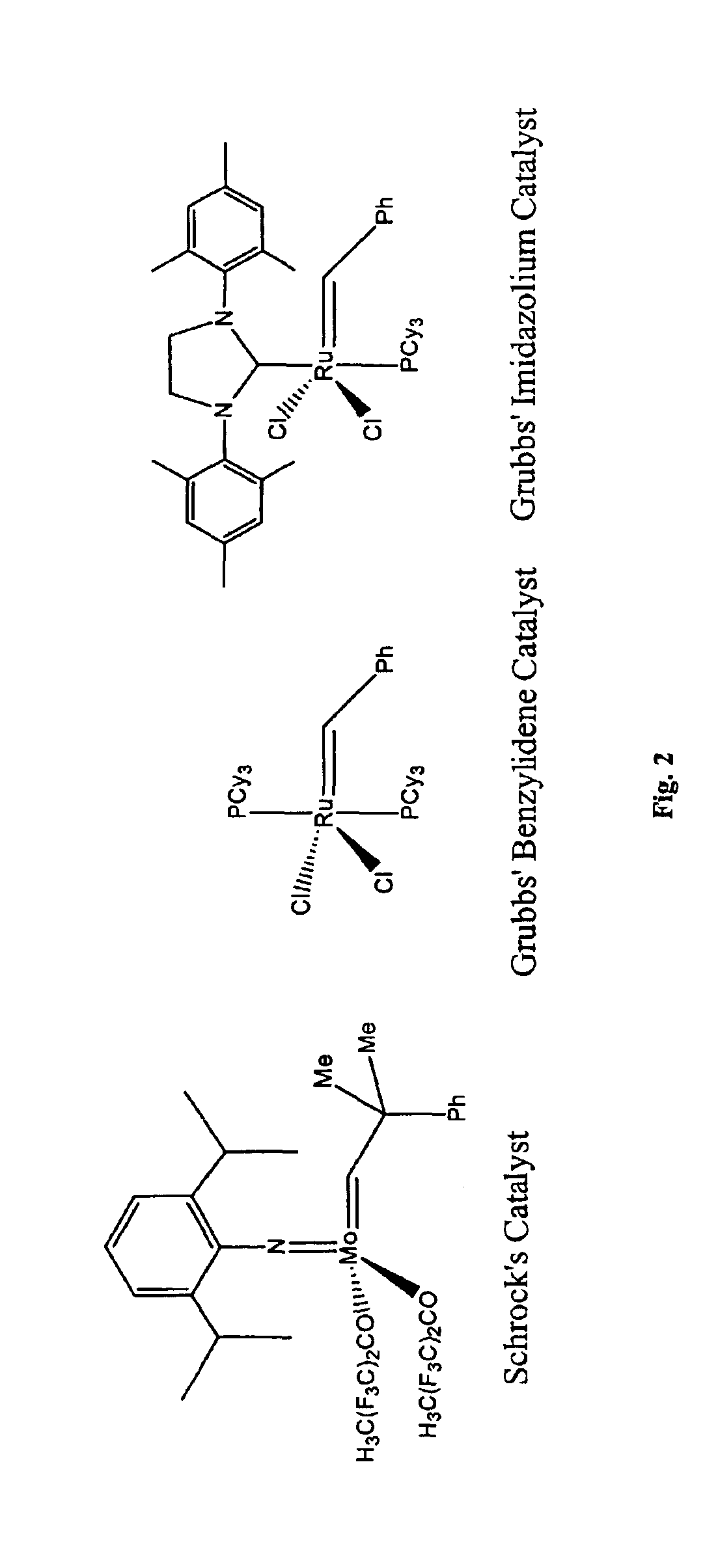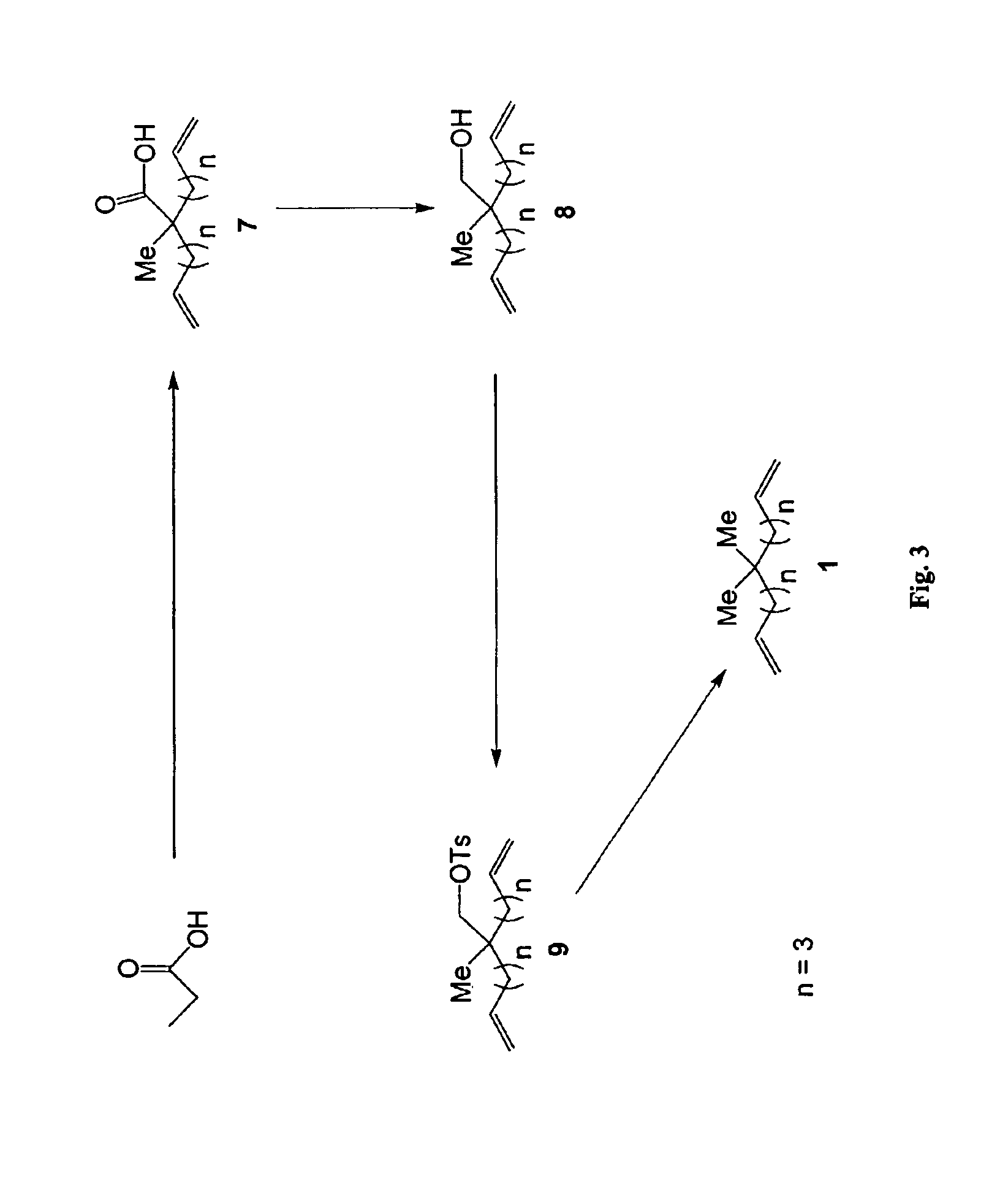Compounds containing quaternary carbons, medical devices, and methods
a technology of quaternary carbons and compounds, applied in the field of compounds containing quaternary carbons, can solve the problems of reducing the insulation capacity of polyurethane elastomers, affecting the insulation performance of polyether polyurethanes, and reducing the strength of polyurethane elastomers
- Summary
- Abstract
- Description
- Claims
- Application Information
AI Technical Summary
Benefits of technology
Problems solved by technology
Method used
Image
Examples
example 1
Diene Synthesis
[0098]Step 1: Dialkenylation of Propionic Acid. Synthesis and Characterization of 6-methyl-1,10-undecadiene-6-carboxylic Acid (Compound 7, FIG. 3)
[0099]One hundred thirty one mL (262 millimolar (mmol)) of a 2.0 M solution of lithium diisopropylamide (LDA) in THF (Aldrich) was placed in a flame-dried, argon-purged 1000 mL 3-neck round-bottomed flask equipped with a magnetic stir bar, 125 mL addition funnel, 250 mL addition funnel, and a condenser. The solution was cooled to −35° C. and 9.48 gram (g, 128 mmol) of propionic acid was added via syringe to the 125 mL addition funnel, followed by about 10 mL of THF. The propionic acid solution was added dropwise over about 50 minutes, and then the addition funnel was washed with THF. The reaction smoked considerably early on in the addition, and white salts formed. Approximately 25 mL of HMPA (about 1.1 equivalent to propionic acid) was added by syringe, and the mixture turned from a pale yellow to orange (salts still presen...
example 2
Chain Transfer Agent Synthesis
[0116]The synthesis of 1,8-diacetoxy-4-octene was carried out by the dimerization of acetic acid 4-pentenyl ester using the Grubbs' benzylidene catalyst (FIG. 2). In an argon atmosphere dry box, 108 mg (0.131 mmol) of the Grubbs' benzylidene catalyst was added to a 100 mL round bottomed flask equipped with one dry ice / isopropanol condenser and one water condenser, each with a hose connector with a valve, and a magnetic stir bar. The apparatus was removed from the dry box and attached to a Schlenk line through the dry ice / isopropanol condenser. The flask was opened to argon after purging the hose. An oil bubbler was attached to the water condenser, but the valve was left closed. Then, 21.66 g (0.1690 mol) of acetic acid 4-pentenyl ester was added to the flask by syringe, and the flask was placed in a 47° C. oil bath. A small amount of bubbling was observed in the purple solution. The valve connected to the oil bubbler was opened to allow argon and ethyle...
example 3
Telechelic Diol Polymer Synthesis
[0117]Step 1: ADMET Polymerization / Depolymerization of 6,6-dimethyl-1,10-undecadiene (Compound 1, FIG. 1) with 1,8-diacetoxy-4-octene as the chain transfer agent (CTA) (Compound 3, y=3, FIG. 1) Using the Grubbs' Imidazolium Catalyst to Give the Unsaturated Telechelic Diacetate Polymer (Compound 4, FIG. 1)
[0118]In an argon atmosphere dry box, 6.162 g (34.17 mmol) of the dry, degassed gem-dimethyl diene monomer (1) was placed in a 100 mL round bottom flask equipped with a large TEFLON magnetic stir bar. About 63 mg (460:1 monomer to catalyst ratio) of the Grubbs' imidazolium catalyst was added to the flask, and a valve adapter was attached to the flask in the closed position. The reaction vessel was removed from the glove box and immediately attached to a Schlenk line, where the valve adapter was flame dried under vacuum. The mixture was stirred slowly in a 46° C. oil bath (only about ⅓ of the liquid monomer level was immersed) and was opened to the va...
PUM
| Property | Measurement | Unit |
|---|---|---|
| temperature | aaaaa | aaaaa |
| pressure | aaaaa | aaaaa |
| time | aaaaa | aaaaa |
Abstract
Description
Claims
Application Information
 Login to View More
Login to View More - R&D
- Intellectual Property
- Life Sciences
- Materials
- Tech Scout
- Unparalleled Data Quality
- Higher Quality Content
- 60% Fewer Hallucinations
Browse by: Latest US Patents, China's latest patents, Technical Efficacy Thesaurus, Application Domain, Technology Topic, Popular Technical Reports.
© 2025 PatSnap. All rights reserved.Legal|Privacy policy|Modern Slavery Act Transparency Statement|Sitemap|About US| Contact US: help@patsnap.com



